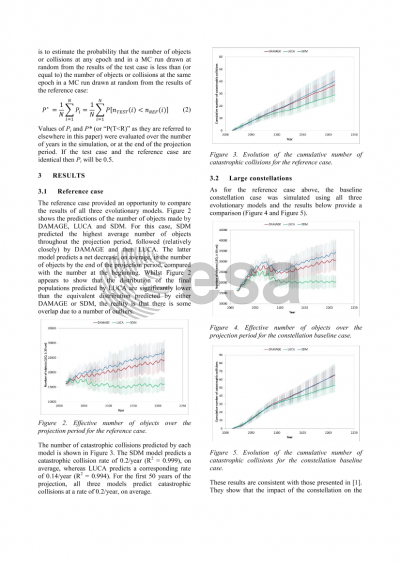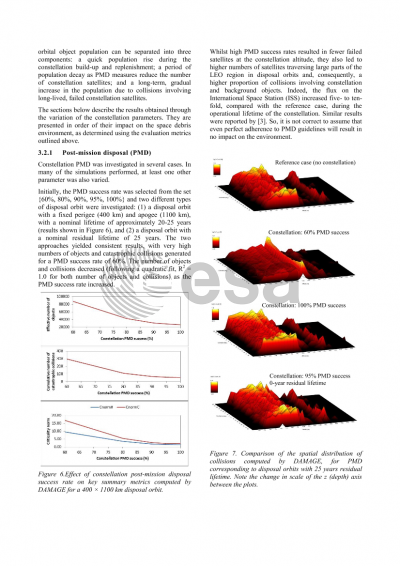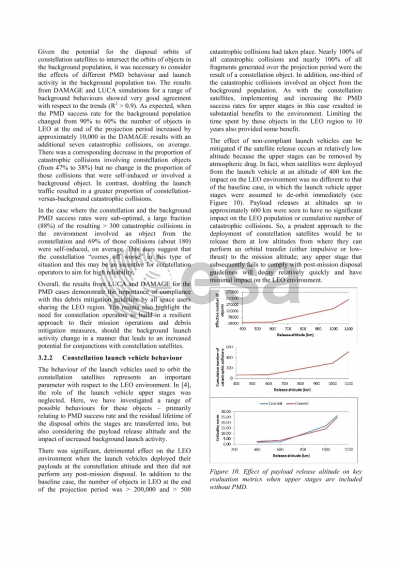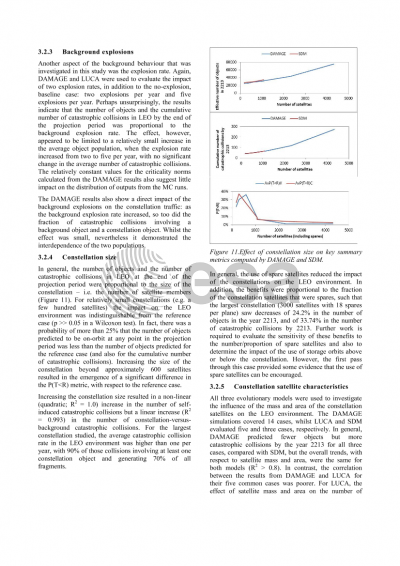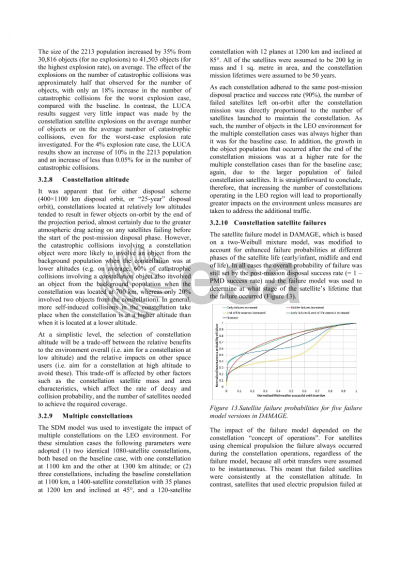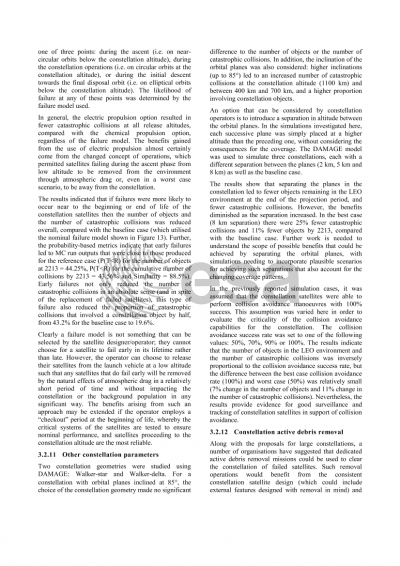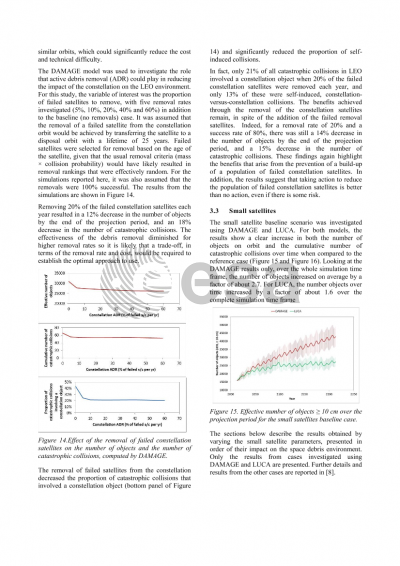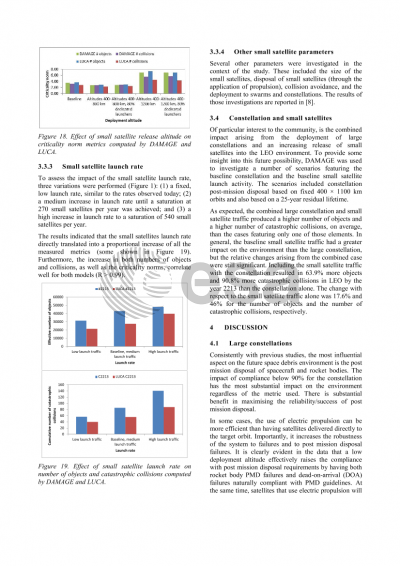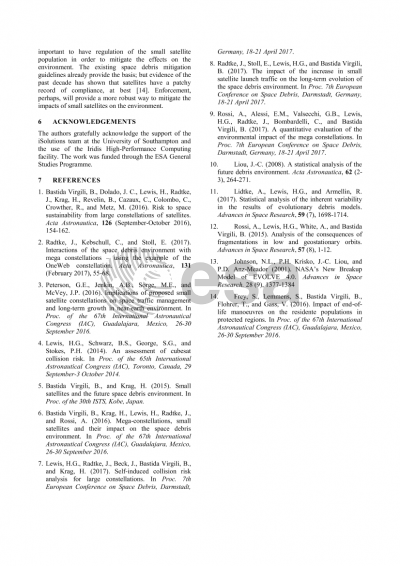Document details

Abstract
Opportunities provided by small satellites in low Earth orbit (LEO) are anticipated to make a significant impact on the space economy through the delivery of important and innovative services. However, with plans by some companies to operate large constellations of small satellites in LEO, and with many small satellite launches forecast in coming decades, there is concern that existing debris mitigation measures will not be sufficient to counteract the impacts of this increased space activity on the LEO environment.
Within this context, a team comprising engineers from industry, academia and the European Space Agency have performed an assessment of the potential impact of small satellites and large constellations on the space debris environment. This assessment included: (1) a review of historical and proposed future small satellite activities and associated technologies; (2) a large number of long-term projections using three evolutionary codes; and (3) detailed analysis of the results of the first two activities, to understand the sensitivity of the debris environment to key satellite and constellation parameters. This paper provides an overview of the work undertaken and the results that emerged.
The assessment featured an unprecedented number of simulation cases performed using the DAMAGE, LUCA and SDM codes. The choice of these cases was driven by knowledge gained through the review of historical and planned small satellite activities. For constellations, these cases included variations in the constellation size, geometry, lifetime, orbit, deployment, spacecraft mass, area and propulsion, amongst others. Variations in the launch rate, orbits, satellite area, mass, lifetime and propulsion for small satellite non-constellation cases were also considered. The results from these simulation cases provided an important confirmation of previous findings: widespread implementation of debris mitigation measures, especially post-mission disposal, by all space users and not just constellation and small satellite operators, is necessary to avoid the accumulation of debris and increase of collision frequency in the LEO environment. In addition, the design and operation of small-satellites, whether as part of a large constellation or otherwise, provides some further opportunities to mitigate the effects of the increased space activity in LEO.
Preview


